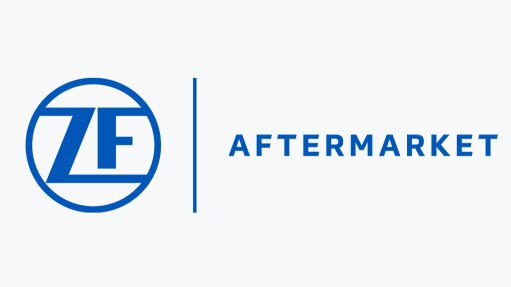Treasury outlines Gauteng govt’s duties towards Sanral e-toll debt
The National Treasury has outlined how the South African National Roads Agency Limited’s (Sanral’s) e-toll debt will be paid in large part by the Gauteng provincial and national government.
This follows Finance Minister Enoch Godongwana’s announcement during his Medium-Term Budget Policy Statement (MTBPS) address on October 26 that government would settle R47-billion of the State-owned entity’s government-guaranteed maturing debt and debt-related obligations.
Government’s assistance is conditional on a solution to Phase 1 of the Gauteng Freeway Improvement Project (GFIP), which controversially entailed the implementation of open road tolling, also known as e-tolling.
Phase 1 of the GFIP has been funded as part of government’s toll portfolio and not as a ringfenced project, for an attributed debt value of R43-billion.
The Gauteng government will pay 30% of the debt and interest obligations of GFIP Phase 1, or R14.1-billion, as well as the maintenance costs related to the project’s Phase 1 network, while national government will cover 70% of the debt and interest obligations, or R32.9-billion.
The bailout will ensure Sanral remains a going concern in the medium term.
Treasury says the national government will make arrangements for the rest of the funds related to its share of the debt obligation at the appropriate time, in line with the conditions and obligations related to the process, and in a manner that does not negatively affect the overall fiscal trajectory as outlined in the 2022 MTBPS.
The implementation modalities of Gauteng province’s commitments will be set out in an agreement between the national government and the provincial government, as will the province’s obligations to the National Revenue Fund.
The agreement is also expected to set out how the province will pay for these commitments. One of the conditions of the R23.7-billion proposed in the Special Appropriation Bill is that these modalities must be concluded by December 31.
Decisions expected by the province will also include the treatment of legacy matters such as revenue collected from users who have been paying their toll fees and/or those who have not paid.
The Gauteng provincial government must finalise a long-term revenue solution that makes funding available for the maintenance of the road network, with Sanral continuing to execute the maintenance thereof.
The option to use the existing toll mechanism remains open and would result in the toll network proclamation remaining in place, Treasury notes.
If the province’s provision for maintenance of the network is financed through other revenue streams within its area of responsibility, the processes on undeclaring the toll network, as per the National Roads Act, will need to be undertaken.
This notwithstanding, all necessary statutory and regulatory processes that must take place to give effect to Godongwana’s announcement are under way, including consultations with relevant stakeholders.
Until a notice in the Government Gazette is issued, Sanral has a statutory obligation to collect any toll fees that are due to it.
The functional assignment of roads, in terms of the Road Infrastructure Strategic Framework for South Africa remains in place.
As a result, the 201 km of the national roads on the GFIP network will remain as national roads and can only be reassigned to other spheres of government by notice in a Government Gazette, with the concurrence of Sanral debt holders.
National government affirms that direct road user charges are the most effective, equitable and efficient way to finance road infrastructure.
It is also a mechanism to manage transport demand, impacting on modal choice and spatial inequality.
Article Enquiry
Email Article
Save Article
Feedback
To advertise email advertising@creamermedia.co.za or click here
Comments
Press Office
Announcements
What's On
Subscribe to improve your user experience...
Option 1 (equivalent of R125 a month):
Receive a weekly copy of Creamer Media's Engineering News & Mining Weekly magazine
(print copy for those in South Africa and e-magazine for those outside of South Africa)
Receive daily email newsletters
Access to full search results
Access archive of magazine back copies
Access to Projects in Progress
Access to ONE Research Report of your choice in PDF format
Option 2 (equivalent of R375 a month):
All benefits from Option 1
PLUS
Access to Creamer Media's Research Channel Africa for ALL Research Reports, in PDF format, on various industrial and mining sectors
including Electricity; Water; Energy Transition; Hydrogen; Roads, Rail and Ports; Coal; Gold; Platinum; Battery Metals; etc.
Already a subscriber?
Forgotten your password?
Receive weekly copy of Creamer Media's Engineering News & Mining Weekly magazine (print copy for those in South Africa and e-magazine for those outside of South Africa)
➕
Recieve daily email newsletters
➕
Access to full search results
➕
Access archive of magazine back copies
➕
Access to Projects in Progress
➕
Access to ONE Research Report of your choice in PDF format
RESEARCH CHANNEL AFRICA
R4500 (equivalent of R375 a month)
SUBSCRIBEAll benefits from Option 1
➕
Access to Creamer Media's Research Channel Africa for ALL Research Reports on various industrial and mining sectors, in PDF format, including on:
Electricity
➕
Water
➕
Energy Transition
➕
Hydrogen
➕
Roads, Rail and Ports
➕
Coal
➕
Gold
➕
Platinum
➕
Battery Metals
➕
etc.
Receive all benefits from Option 1 or Option 2 delivered to numerous people at your company
➕
Multiple User names and Passwords for simultaneous log-ins
➕
Intranet integration access to all in your organisation

















